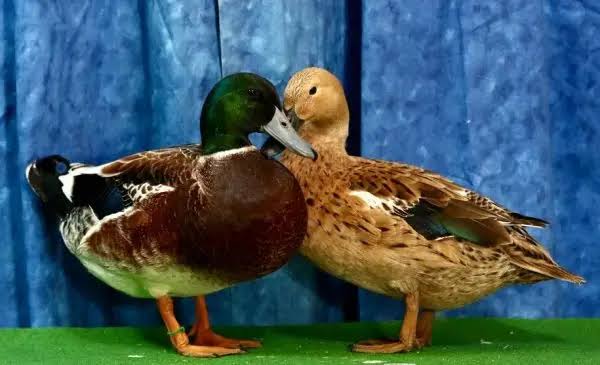Elizabeth Duck

Scientific Name
Anas platyrhynchos domesticus
Alternative Names
Lizzie Duck
Measurements:
| Feature | Male | Female |
|---|---|---|
| Length | About 50–60 cm (19–23 in) | About 45–55 cm (17–21 in) |
| Weight | 1.6–1.8 kg (3.5–3.9 lb) | 1.2–1.6 kg (2.6–3.5 lb) |
Status
The Elizabeth Duck is classified as endangered by the Rare Breeds Trust of Australia. Its population is very limited, found mainly in Australia and New Zealand. Conservation breeding efforts are ongoing among dedicated breeders to preserve this rare breed.
Average Life Span
10–15 years
Breed History
The Elizabeth Duck was developed in 1972 in Merrylands, New South Wales, Australia, by Lance Ruting, who named the breed after his wife, Ann Elizabeth Ruting. It originated from a cross between Rouen Clair and Mallard ducks. Ruting’s goal was to produce a small, fast-growing meat duck that was also beautiful in appearance. Though once known for its usefulness and beauty, the breed declined in popularity and is now considered endangered.
Identification
Elizabeth Ducks are compact and rounded in shape, with short legs and a broad chest.
Drakes have glossy green heads ending in a white ring around the neck, claret-colored chest feathers bordered in cream, off-white underbellies, charcoal-gray backs ringed with white, solid black rumps, and dull black-brown tails.
Females are fawn-colored with brown markings at the center of each feather, off-white primaries spotted with gray, and blue-green secondary flight feathers.
Both sexes have gray bills, dark brown eyes, and bronze legs.
Purpose
Primarily bred for meat, but also kept for egg production and ornamental purposes due to their attractive plumage.
Breed Eggs
Elizabeth Ducks lay about 100–150 eggs per year, occasionally more under good conditions. The eggs are white to off-white, medium-sized (around 50 g / 1.76 oz), and have strong shells. They often go broody, making them capable of hatching their own clutches naturally.
Temperament & Behavior
Elizabeth Ducks are calm, quiet, and docile. They are easy to handle and interact peacefully with other birds, making them ideal for small farms and backyards. They are not strong fliers but are hardy and adaptable to most climates.
Their diet includes grains, seeds, grass, and insects. They enjoy foraging and require access to clean water for drinking and bathing. They need moderate space to roam safely, ideally with some protection from predators, as their flightlessness makes them vulnerable.
Genetic Profile
Their color genetics are described as Harlequin phase dusky Mallard. The drakes display a dominant green head coloration with claret and white body markings, while females show a recessive fawn-brown pattern. The sex-linked bill coloration is a notable trait, similar to that of the Welsh Harlequin duck.
